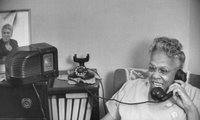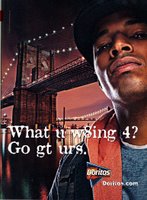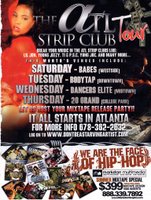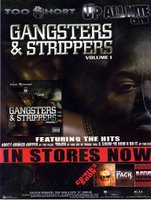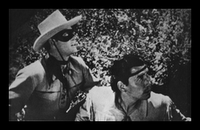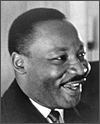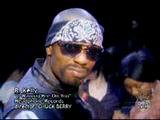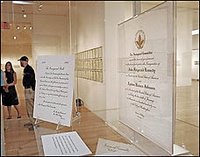
From The New York Times…
-----------------------------------------
Hey, Gay Spender, Marketers Spending Time With You
By STUART ELLIOTT
FOR years, advertisers seeking to reach gay and lesbian consumers concentrated their spending in the print media. There were few effective or efficient alternatives among the media that offered the appealing attributes of sight, sound and motion.
To be sure, those advertisers could have bought commercial time on television. But spots during TV series that would seem appropriate — “Will & Grace,” for example — cost too much; the shows ran on mainstream networks and the audiences included so many heterosexuals.
That limited media menu is starting to be broadened. TV, the Internet, radio and even movies are joining magazines and newspapers as places to pitch products to gay men and lesbians.
For instance, the proliferation of film festivals intended for gay and lesbian moviegoers has helped turn such events into marketing venues. The Stolichnaya brand of vodka sold by Pernod Ricard USA is underwriting a documentary, “Be Real,” and a complementary Web site (stoli.com/bereal), presenting what are called “stories from queer America” in the form of profiles of six lesbians and gay men.
“The film festivals have become an increasingly important gathering place, offering a way for the community to see itself,” said Stephanie Blackwood, partner and account director at Double Platinum in New York, which conceived the project as part of its duties as the Stolichnaya agency for the gay and lesbian market.
• ”Be Real,” which runs 53 minutes, was produced by two documentary filmmakers, Beverly Kopf and Bobbie Birleffi, and directed by Ms. Birleffi. The film has been screened in cities that frequently play host to gay and lesbian movie festivals, like Miami, New York and San Francisco, along with some that do not, like Birmingham, Ala.
“We didn’t just want to sponsor film festivals. We wanted to be way involved on a grass-roots level,” said Adam Rosen, senior brand manager for Stolichnaya at the Pernod Ricard USA division in New York, part of Pernod Ricard.
Although the title “Be Real” refers to a theme of Stolichnaya ads that it is “genuine Russian vodka,” the project is “about more than the brand,” said Mr. Rosen, who is an executive producer of the documentary. "We want to showcase our commitment to the community in a culturally relevant way.
“This film will be the springboard for all our advertising and marketing in the year to come,” Mr. Rosen said, adding that the budget for the “Be Real” project, including production and promotion, is more than $3 million.
A year ago this week, the media giant Viacom introduced Logo, a cable television network and a Web site (logoonline.com) aimed at gay men and lesbians, as well as their friends and families. The Logo cable channel is available in 23 million households, compared with 13 million last June.
To date, more than 60 mainstream marketers have advertised on Logo, including Ameriprise Financial, Anheuser-Busch, Bacardi, Continental Airlines, Dell, Eastman Kodak, eBay, General Motors, Johnson & Johnson, the Orbitz unit of Cendant, Sears Holdings, Sony and Subaru. ”There was pent-up demand for a channel to cater to this consumer,” said John Nash, president at Moon City Productions in New York, the agency that creates campaigns aimed at gays for Subaru, part of Fuji Heavy Industries.
Because “Subaru is a mature brand in this space, in its 11th year of doing gay and lesbian outreach,” Mr. Nash said, he was eager to add television to a media plan that has long been dominated by print outlets.
Subaru was one of three charter advertisers on Logo, along with Orbitz, owned by the Cendant Corporation, and the Paramount Pictures division of Viacom. Initially, Subaru ran ads on Logo that were produced for mainstream consumers and created by the brand's general-market agency, DDB Worldwide in New York, part of the Omnicom Group.
Since October, Subaru has been running three customized commercials on Logo, created by Moon City for the network. “They have exceeded our expectations,” Mr. Nash said. Two more will be introduced next month.
The customized Subaru spots offer subtle cues meant to signal the intended audience. When two people are shown together, for instance, they are both men or both women.
“TV, of course, is one of the most powerful media,” Mr. Nash said. “And you can get people to pay attention by running commercials in a contextual environment like a Logo. But if you goose it that extra amount with custom creative, awareness goes up 15 or 20 percent.”
Along those same lines, Logo is offering advertisers the chance to run nontraditional commercials that avoid overt product peddling.
The commercials, which Logo executives call interstitials because they run between shows, are being sponsored by three marketers: the Sears, Roebuck unit of Sears Holdings; Subaru; and the TomTom brand of global positioning systems sold by TomTom International.
“In the early research we did, testing what our audience was looking for, they said they wanted to see ads on the channel to see who would be reaching out to them,” said Lisa Sherman, senior vice president and general manager at Logo in New York, part of the MTV Networks division of Viacom.
At the same time, “we have to be careful not to overreach,” Ms. Sherman said, “and stay within the boundaries” that separate advertising from programming.
The TomTom interstitials, each lasting 20 seconds, offer travel tips.
The Sears-sponsored segments, each two minutes long, feature Dave Alhadeff, the owner of a design store, offering home décor ideas.
In one, as he discusses energy-efficient appliances, he mentions by name the Kenmore Elite line sold by Sears.
For Subaru, the two-minute interstitials play like condensed versions of “Get Real,” offering glimpses of Subaru owners like Mary Seton Corboy, a pioneer in urban agriculture who runs Greensgrow Farm in Philadelphia, and a couple, Pamela Fletcher and Susan Murphy, who are triathletes and expedition racers.
“In this fragmented media age, everybody’s demanding hypercustomized creative to talk to specialized audiences,” said Brian Graden, president at Logo and at MTV Networks Music Group Entertainment.
“We’re all coming up to speed together on the best way to reach this audience,” he added.
• As marketers show interest in Logo, Mr. Graden’s “we” is expanding to include other media companies.
For example, the Bravo cable network owned by NBC Universal, part of General Electric, teamed up with Planet Out to introduce on June 1 a Web site (outzonetv.com) aimed at lesbians and gay men.
The features on the Web site include television shows, blogs, video clips and social networking.
Among the sponsors are gay.com, operated by Planet Out, and the IFC cable network, part of the Rainbow Media Holdings unit of the Cablevision Systems Corporation.
Rainbow Media? Now there is an example of how to talk to a specialized audience.
